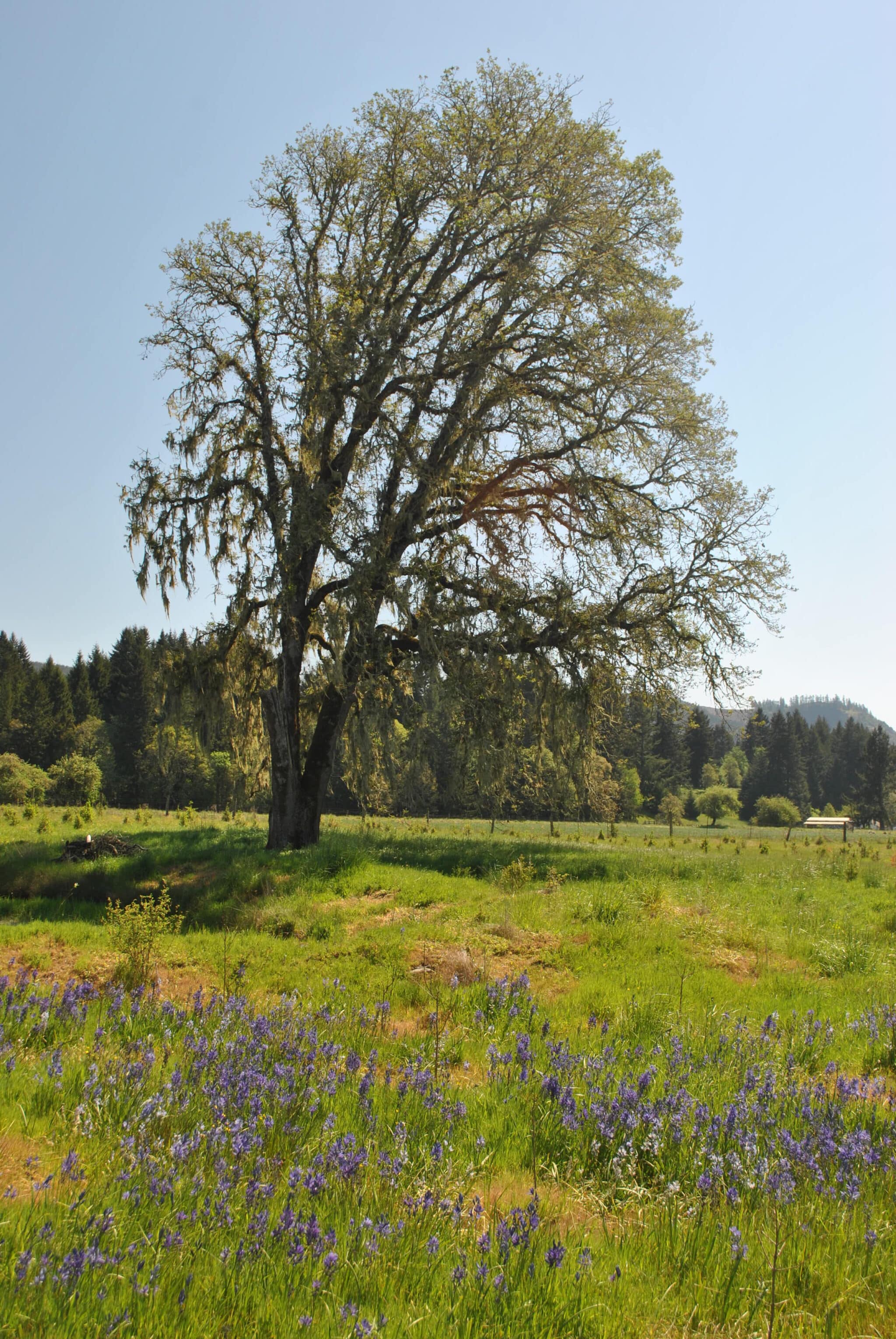
Oak Savanna Restoration
Oak savanna is one of the rarest habitat types in the Willamette Valley, but also a priority for restoration because this habitat type supports more than 200 native species.
Restoration of this increasingly rare habitat type is completed by removing and/or managing coniferous and other deciduous trees in an existing stand or prairie. Often restoration of Oregon white oaks benefits other rare species such as Kincaid’s lupine and Fender’s blue butterfly.
In the Willamette Valley, oaks were originally found in a mosaic of prairies, oak savanna, and riparian habitats throughout the valley floor and low-elevation slopes. Oaks were most common on flat to moderately rolling terrain, usually in drier landscapes, and often between prairie remnants and conifer forests. Today, oak woodlands generally are found in small, isolated pockets surrounded by other land uses, such as development or agriculture.
Calapooia Watershed Council is a partner of the Oregon White Oak Restoration Program. The purpose of the Oregon White Oak Restoration Program is to enhance existing oak habitat and to re-establish the species in publicly protected conservation areas. This will be accomplished through a strategic planning initiative and educational outreach activities.
Resources
Conserving Oak Habitats in the Southern Willamette Valley -PDF from Rivers to Ridges
A Landowner’s Guide for Restoring and Managing Oregon White Oak Habitats – PDF publication by BLM
A Practical Guide to Oak Release – PDF Constance A Harrington and Warren D Devine
Move Over Douglas Fir; Oregon White Oaks Need Room to Grow – USDA Pacific NW Research Station
Oregon’s Oak – A Vanishing Legacy HD Video – Yamhill Watershed Stewardship Fund
Restoring Oak Habitats in Southern Oregon and Northern California – A Guide for Private Landowners – Klamath Bird Observatory
Wildlife On White Oaks Woodlands – World Forestry Center
Other partner agencies involved in this work include:

